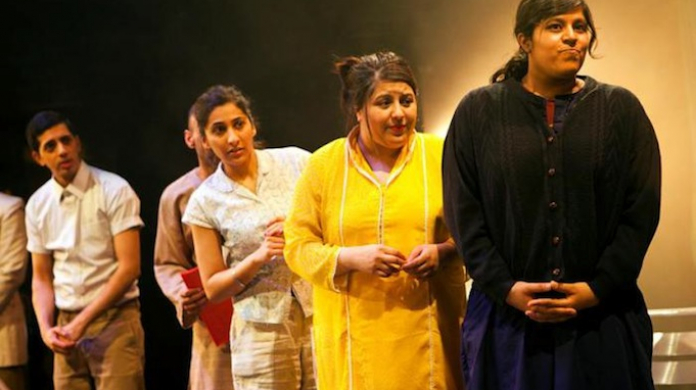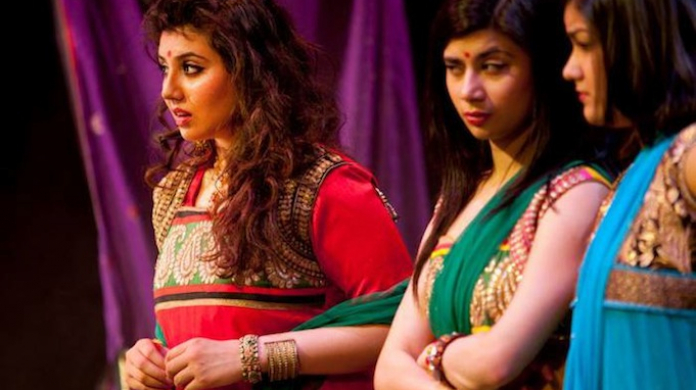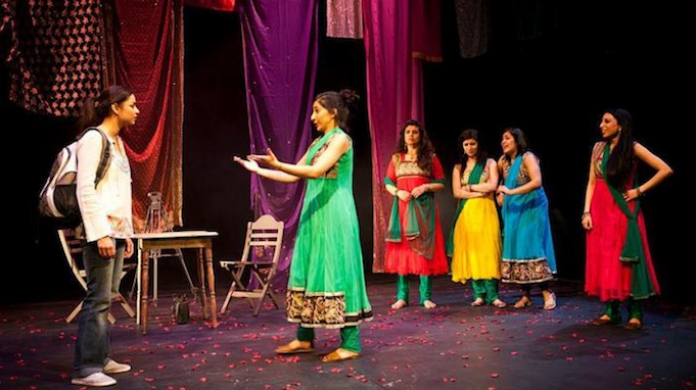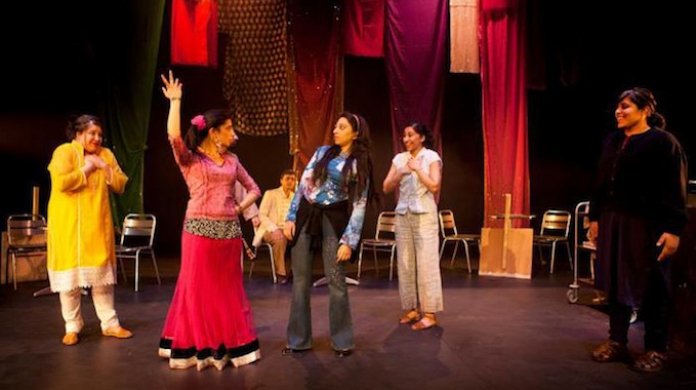Suba Das has been working with South Asian people in Leicester, and is about to go to India to continue the work. He tells Eleanor Turney why the project is close to his heart.
Reflecting the city
It was only last year that this project started, but it feels like a lifetime ago. It was my second year at Curve in Leicester, which has one of Europe’s most ethnically diverse populations. In some statistical reports, it’s referred to as Europe’s first “plural city”, which means that there’s no overwhelming ethnic majority or cultural majority. A large percentage of the population is South Asian – around 33% of Leicester.
When I was asked to join Curve, it was clear that they were looking at how they could commission and develop new strategies, and work to engage with South Asian audiences more widely. It wasn’t an expertise that they had in the team at that point, but my background – although I’m obviously South Asian – was at the National Theatre Studio and working on the development of new work there. I arrived at Curve knowing that there was a journey to embark on around commissioning and the identity of new work, and in parallel to that, they also wanted to look quite closely at what their community artistic outreach looked like.
Curve has a thriving young company, and does lots of participatory work around its arts programmes, but at that point they weren’t necessarily reflective of the city’s diversity. We were looking for a project that we thought would help us to engage with a much wider community participant base, around text and performance. The heart of it was my assertion that it may be useful to look at work that was culturally specific, in that it would offer South Asian participants an extraordinary array of parts that may have more complexity than might be ordinarily offered in the Western cannon.
"I arrived at Curve knowing that there was a journey to embark on around commissioning and the identity of new work..."
I’d been invited to the Royal Court’s readings programme, and the Court at that point was working on a Creative India project and had identified that there was something more that they wanted to do with that work. We had a good conversation about the fact that they felt very supported to create that work, but given the capacity available to them in their space, they were only ever going to be able to offer some readings. In terms of audience engagement, that would be a few hundred people.
I wanted to find a way to welcome that work to Curve. I knew we didn’t have production budgets available for that to be professional work, but I also knew that I was looking at ways of engaging Leicester’s younger, aspiring performing community. This felt like a logical end to bring the two together.
We brought together an ensemble of 22 young, aspiring South Asian actors. We worked with practitioners from Shakespeare’s Globe and the RSC, and put together a really rigorous professional development programme. For our own produced work, we’re now averaging 48% ethnic and diverse audiences, which is up from about 16% when I started. We’re getting close to reflecting the mix of our city. We were really thrilled to have really full, really diverse houses for the work. Bringing these plays to Curve opened up a collaborative door to us that otherwise wouldn’t have existed. We wouldn’t have known where to start building a relationship with the Indian new writing community.
"We’re now averaging 48% ethnic and diverse audiences, which is up from about 16% when I started. We’re getting close to reflecting the mix of our city."
The two plays from that programme were OK Tata Bye Bye and The Pereira’s Bakery. They’re two very different perspectives on Indian society – one is based in Mumbai and one is based in a rural region. That was interesting as an artistic juxtaposition. We were led by the participants – there is a lack of professional diversity in our industry, but it’s more often women who participate in specifically participatory projects. We knew we had a strong cohort of young women who’d want to take part. OK Tata Bye Bye is female-led, and The Pereira’s Bakery has more gender balance and some great female roles.
It really exciting for us to work with two female playwrights – I’m very aware of statistics and conversations about women. We’ve been working regularly over the past few years with really great female writers; when we’ve brought new playwrights into the building, more than half of the work has been by female writers. We’re really proud of that.
"I’m not interested in sanitised, block accounts or presentations of cultural diversity."
For me, as an artist, I’m very interested in the tensions within communities, and exploring the idea of who might be the oppressed within the oppressed – I think that’s always an interesting consideration. I’m not interested in sanitised, block accounts or presentations of cultural diversity.
Exploring white identity in relation to South Asian identity is an interesting conversation, but I think work that explores that can fall into very conventional lines. Sometimes, the conversation itself doesn’t offer South Asian artists the most complexity and variety of performance opportunities.
We’re heading off to India in December, with Aakash Odedra, who’s in South Korea at the moment. When we started the project, we knew we wanted Aakash to be involved, and what’s been thrilling is just how excited he’s been about the project. We asked him to join us for a couple of days on this R&D trip, but he wants to be there for all of it. It’s lovely!
"I want to make a piece of work that isn’t about exoticism or poverty porn."
Through the Reimagine Fund, we’ve received funding to do some R&D around creating a stage show of Pink Sari Revolution, a book by Amana Fontanella-Khan about the Gulabi Gang [also known as the Pink Gang]. They’re an army of 20,000 female vigilantes in India, who fight for women’s rights – quite literally, sometimes – and do so wearing a uniform of neon pink saris. As a theatre maker, you have moments when you stumble on something and it’s such a powerful theatrical image it just needs to be put on stage.
The issue of women’s rights in India can be a real problem – we’re all very aware of the Delhi bus rape and other attacks, so it was really interesting to learn of this reaction: women in India doing something to counter that. I’m not seeking to sanitise the experience, or to make a piece of work that makes light of anything, but I want to make a piece of work that isn’t about exoticism or poverty porn. I want it to be inspiration, to challenge assumptions, to create new dialogue – to inspire but not to hector. This story is straightforwardly inspirational.
The moment you know something is a good idea is when it starts generating momentum without you having to push it. For the first time in Curve’s history, we are being directly approached by women’s rights organisations, women’s charities, other charitable organisations working with refugees, and with the disenfranchised and disconnected parts of the South Asian community in Leicester. People have started knocking on our door, and it’s wonderful.
Suba Das is Associate Director at Curve in Leicester, and will be in India in December to continue this work. He was talking to Eleanor Turney.



